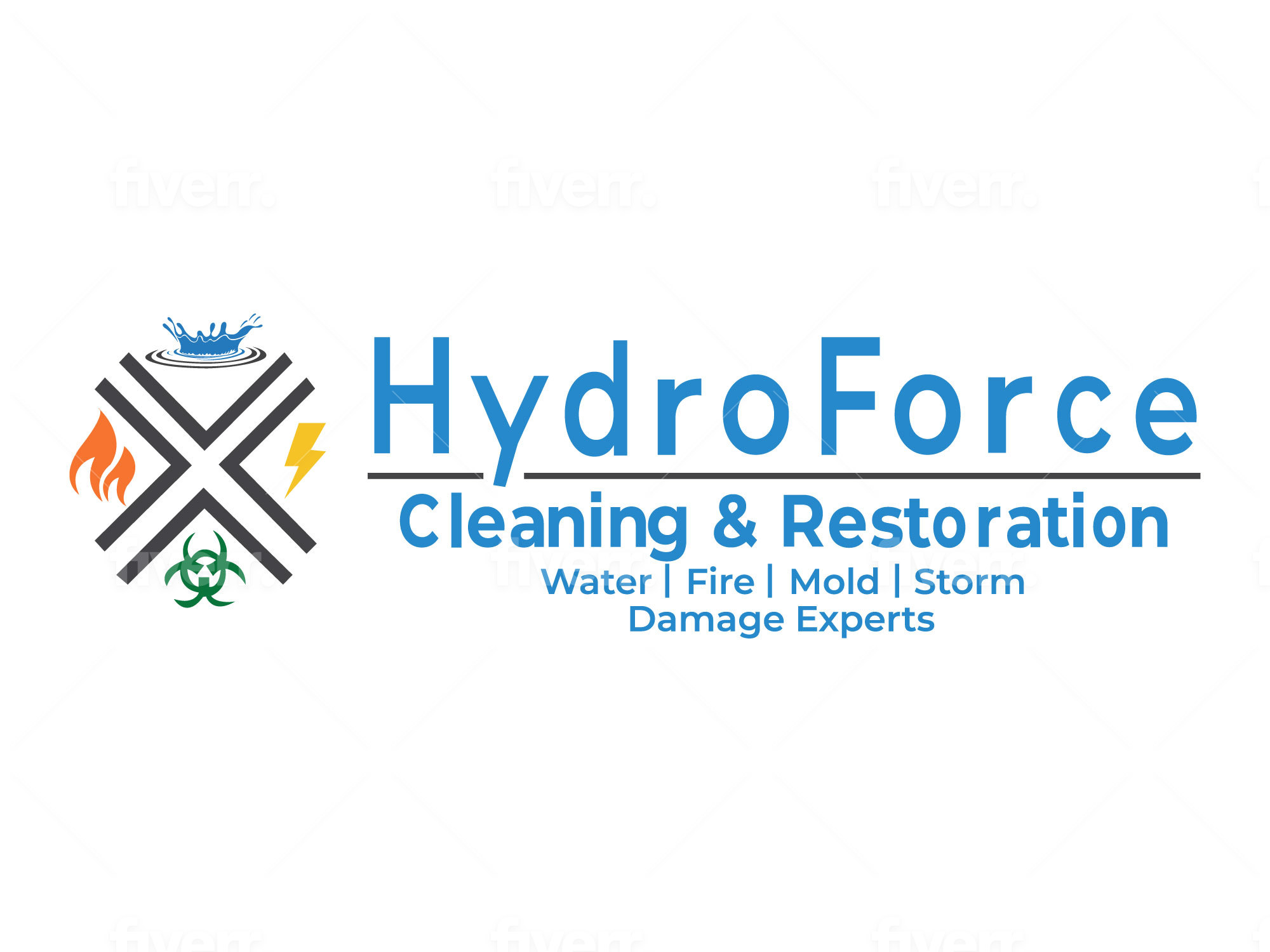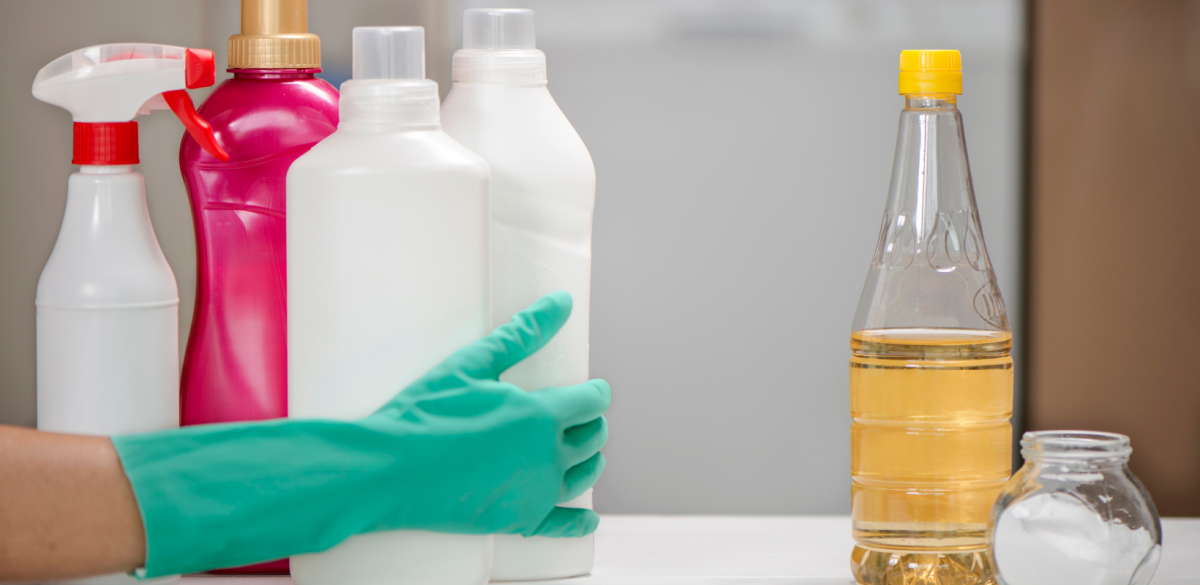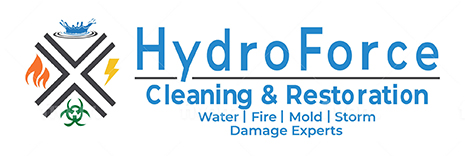Is Bleach or Vinegar Better for Killing Mold?
Home » Archives for January 2025
Key Takeaways: Addressing mold promptly is important to prevent health risks and property damage. Mold thrives in moist environments and can worsen respiratory conditions. While bleach is ineffective for deep mold removal and may exacerbate the issue, vinegar is a safer, eco-friendly solution for small infestations. Preventative measures, such as controlling humidity, fixing water issues, and ensuring proper ventilation, are crucial. For extensive mold growth or persistent issues, professional mold remediation is recommended to ensure thorough and lasting results, safeguarding your home and health.
Dealing with mold in your home or property requires quick action and the right solutions to prevent it from spreading and causing expensive damage. Understanding how mold grows, why mold exposure harms your health, and the best removal methods are essential. In this article, we’ll explore the dangers of mold, whether bleach or vinegar are effective at eliminating it, which types of mold vinegar can kill, how to use vinegar for mold removal, tips to prevent mold growth in your home, and when it’s time to call in professional mold removal specialists.
How Does Mold Grow and Why Is It Harmful?
Fungi naturally grow indoors, but spores can easily enter homes and buildings and settle inside. Mold thrives in areas with moisture, attaching itself to surfaces where both water and a food source are present. Materials like wood and drywall provide an ideal environment, as they serve as natural food sources that, when combined with moisture, promote mold growth. However, once the source of moisture is removed, mold cannot survive and will eventually disappear.
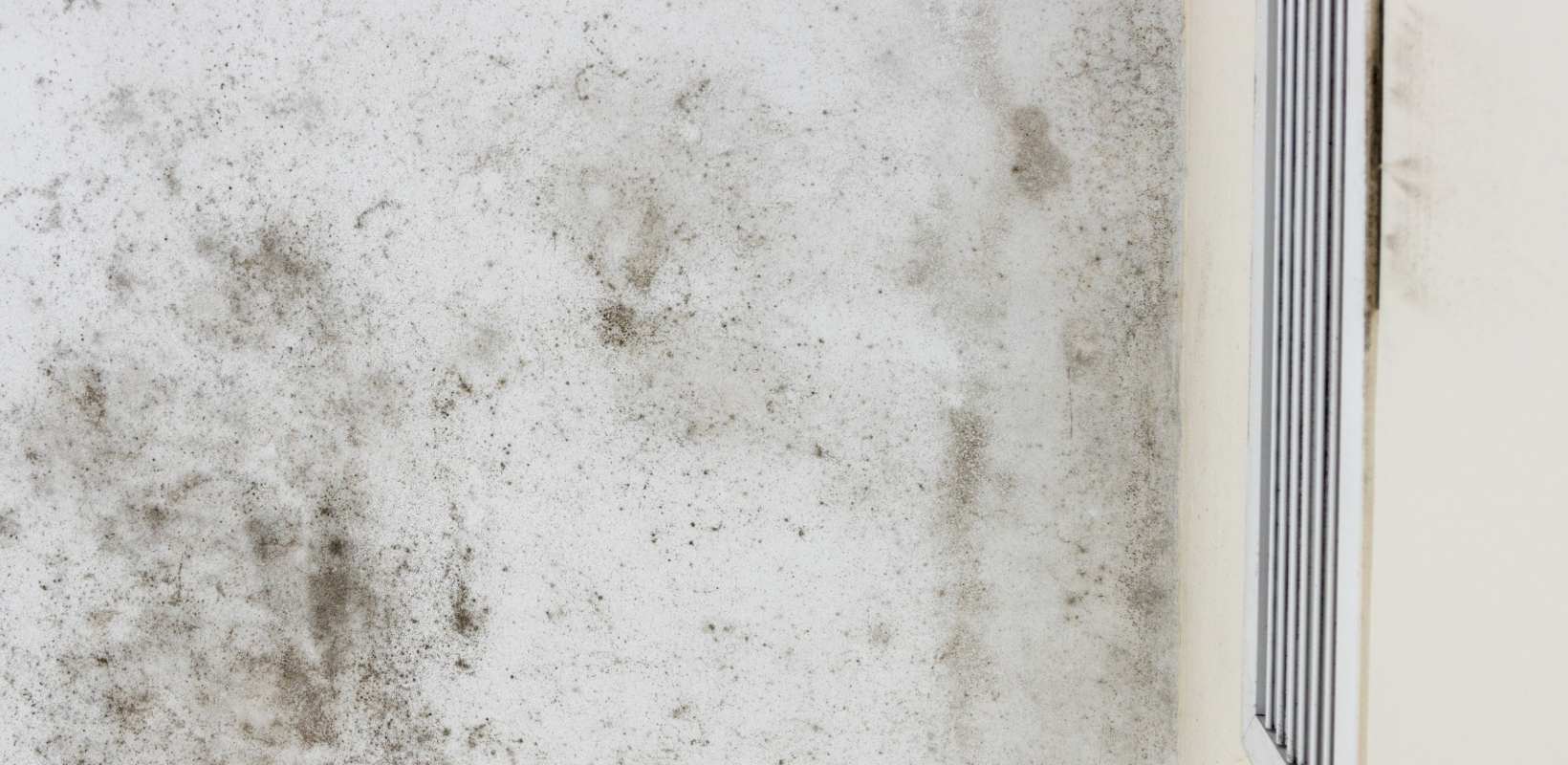
Mold poses a serious health risk, particularly for individuals with asthma or pre-existing respiratory conditions, as it can significantly worsen their symptoms. Prolonged mold exposure can also lead to a range of allergy-related symptoms and respiratory problems, affecting even those without prior health issues.
Removing mold promptly is essential the moment you discover it on your property. Mold often stems from issues like plumbing leaks, faulty sinks, or even cracks in the foundation, allowing moisture to seep into your home or business and create the perfect environment for mold growth. Depending on the extent of the problem, you may be able to handle the cleanup on your own, or you might need to enlist the help of a professional mold removal service. The key is to address the issue quickly to prevent further damage and protect your space.
Does Bleach Kill Mold?
Bleach does not effectively kill mold; this is a common myth. While it may eliminate mold on the surface, it doesn’t penetrate deep enough to destroy the underlying mold membrane, which is where the real problem lies. As a result, mold often regrows after being treated with bleach.
The chemical structure of bleach prevents it from seeping into porous materials like wood or drywall. Instead, the mold’s membrane may retreat further into the surface to escape the chemical. Even worse, when exposed to bleach, mold can treat it as a nutrient, accelerating its growth. In essence, using bleach to kill mold can make the problem worse. When it comes to removing mold growth, bleach can be used for various purposes. Here are a few best uses for bleach:
- Hard and non-porous surfaces including tiles, glass, sinks, bathtubs etc.
- For mild mold growth that covers less than 10 sq ft
Pros of Using Bleach to Remove Mold
- Bleach kills mold when it comes in direct contact with the fungi. However, bleach does not penetrate porous materials such as drywall and carpets, allowing mold to grow further.
- Bleach kills mold on hard, non-porous surfaces such as bathroom tiles or toilet fixtures.
Cons of Using Bleach to Remove Mold
- The chemicals in bleach can cause health concerns such as shortness of breath, coughing, chest pain etc.
- It can create chemical burns and irritation of the skin.
- Bleach produces dioxin which can cause cancer.
- It can irritate those with respiratory conditions.
- Bleach is dangerous for pets as it can cause lesions and chemical burns.
- Bleach causes structural damage to your property due to the weakening of the wood fibers.
- It can cause the mold infestation to get worse as it can be a food source for mold.
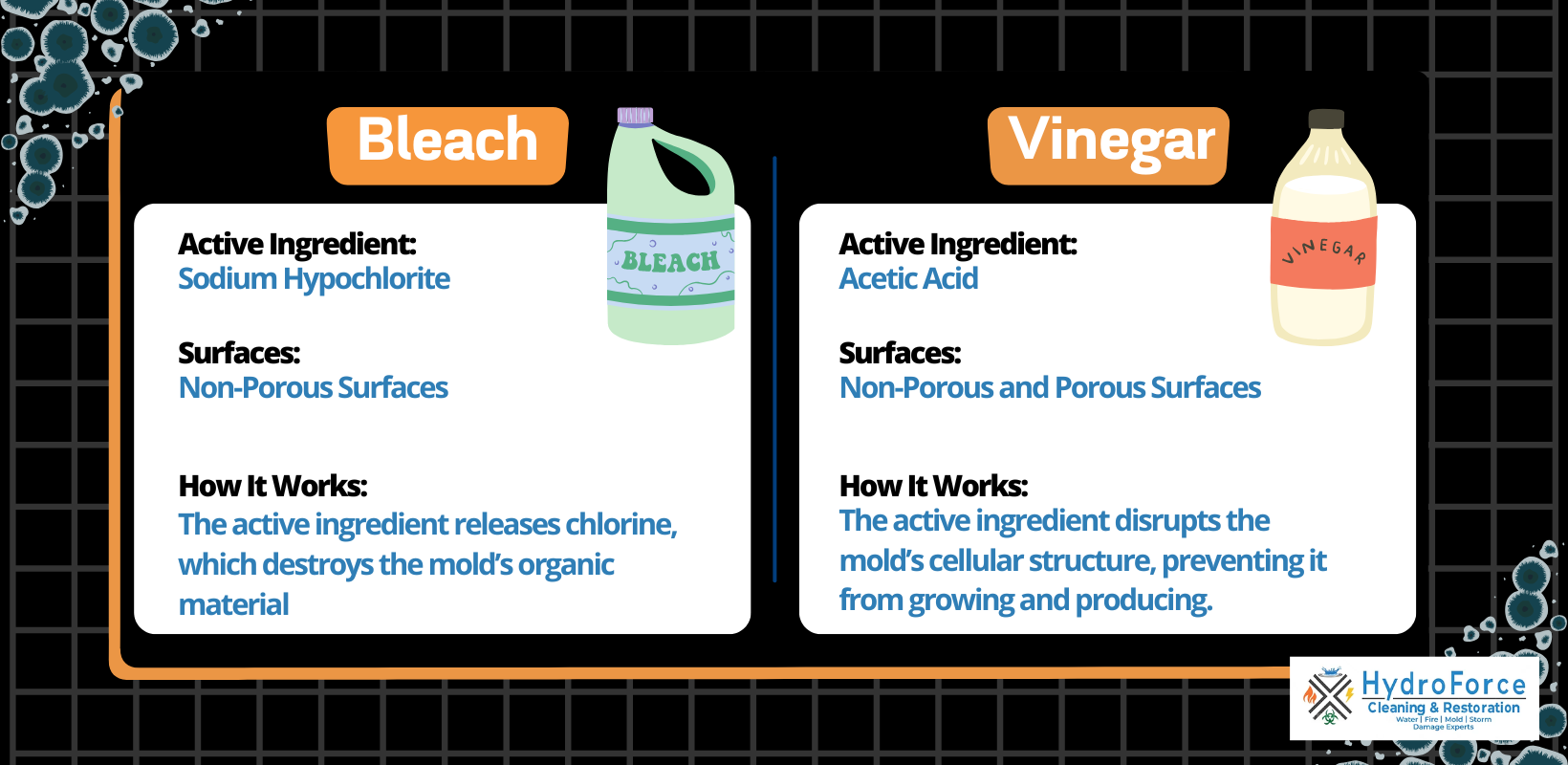
Is Vinegar Effective for Killing Mold?
Vinegar is a highly effective solution for eliminating mold. White vinegar can kill up to 82% of mold species and helps prevent its return. Thanks to its natural antifungal and antibacterial properties, it’s an excellent tool for tackling mold.
Vinegar’s acetic acid, with a pH of 2.5, disrupts the growth of mold and fungi, stopping them in their tracks. Vinegar works best on non-porous surfaces and is a safer alternative to harsh chemicals like bleach. It is ideal for treating small mold-affected areas, such as hard surfaces in bathrooms, basements, and kitchens, making it a practical and eco-friendly choice for mold removal. There are excellent advantages for using vinegar to remove mold. Here are a few:
- Vinegar does not contain toxic fumes
- It is an effective mold cleaner when it is mixed with water
The main disadvantage of using vinegar to kill mold is that it can scratch surfaces such as stone, granite and marble.
Can Vinegar Kill All Types of Mold?
Vinegar is highly acidic and capable of eliminating around 82% of mold species from porous and non-porous surfaces and materials. However, it is not completely effective against certain types of mold, such as black mold.
How to Use Vinegar to Kill and Remove Mold
Removing mold from your property promptly is essential to prevent it from spreading and causing extensive, costly damage. Addressing the issue early ensures your space remains safe and well-maintained.
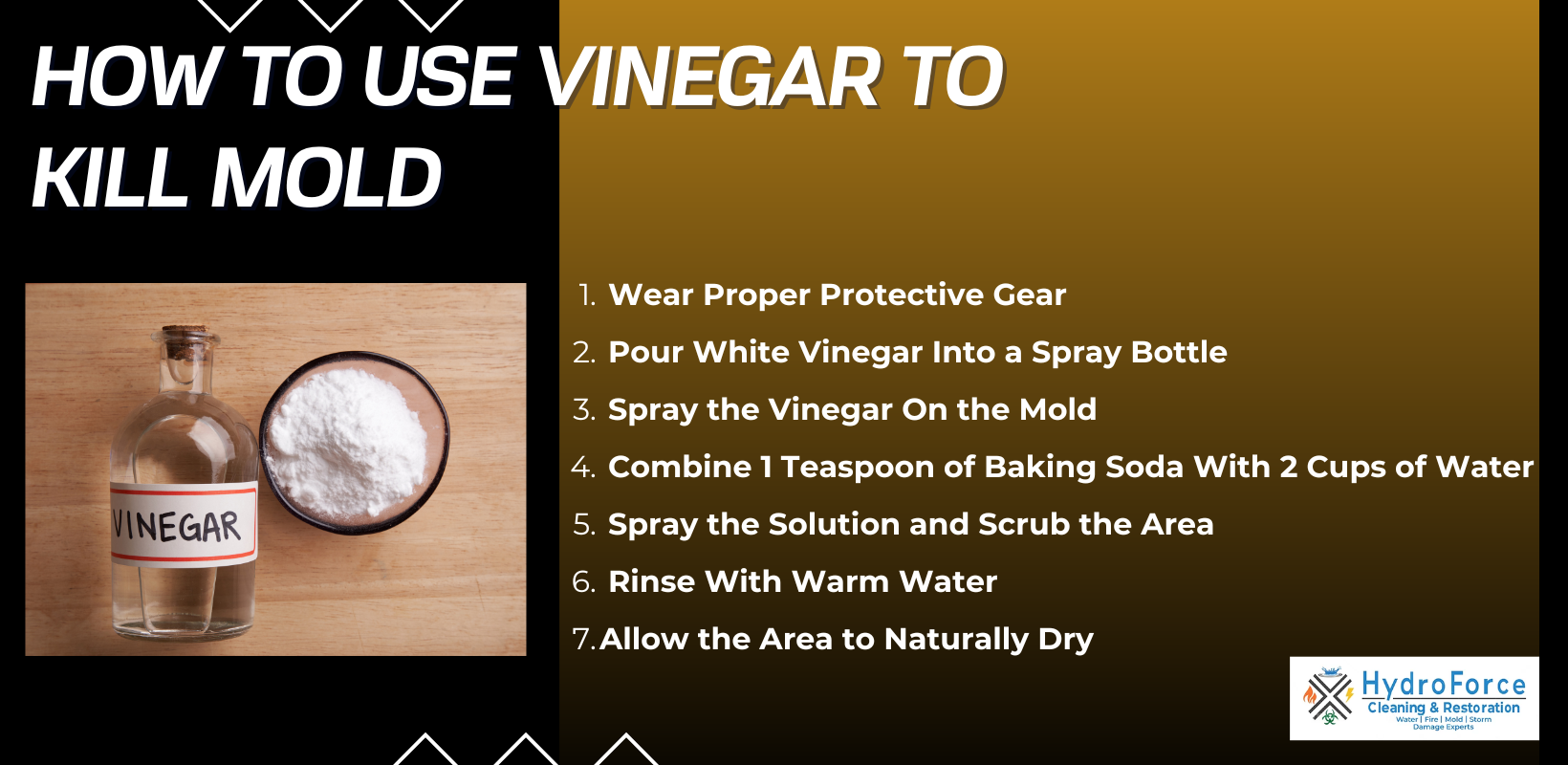
Following these steps will help you effectively eliminate mold growth using vinegar:
- Always make sure to wear protective clothing such as goggles, gloves, and a mask so you do not get exposed to mold.
- Get the vinegar solution ready by pouring white distilled vinegar into a spray bottle.
- Spray the vinegar onto the mold and let it sit for at least an hour to get deep into the mold.
- Put together a baking soda solution by combining 1 teaspoon of baking soda and 2 cups of water into the spray bottle and shake it until mixed.
- After spraying the baking soda solution onto the mold, make sure to scrub the area with a scrub brush.
- Rinse the area with warm water.
- Finally, make sure to spray the area again with the vinegar or baking soda solution and allow for the area to dry naturally so all leftover mold can be killed.
How Can I Prevent Mold from Growing in My Home?
While small mold infestations can sometimes be handled as a DIY project, larger issues may require the expertise of a professional mold removal service. Prevention is the best way to protect your home from mold growth. Here are some effective ways to keep mold at bay:
- Keep indoor humidity at 60%
- Clean roof gutters regularly
- All wet surfaces should be dried quickly so moisture sources can be reduced
- Ventilation should be increased by using exhaust fans and opening windows
- Any moisture-producing appliances should be vented to the outside
- Any water problem should be fixed promptly
- Any areas that have water damage should be fixed within 24-48 hours
When to Call Professional Mold Remediation Specialists
If you’re dealing with severe mold growth that you cannot manage yourself with natural or chemical remedies, it’s essential to contact a professional mold removal company. Prompt action is crucial to prevent further, potentially costly damage to your property. Leaving mold untreated for too long not only jeopardizes your property’s structure but also poses serious health risks due to prolonged exposure.
It is recommended to call a mold removal professional instead of trying to remove the mold yourself if the mold covers more than 10 square feet of space or if you do not have the tools or expertise to do the job.
Reliable Mold Removal and Remediation in Chicago, IL
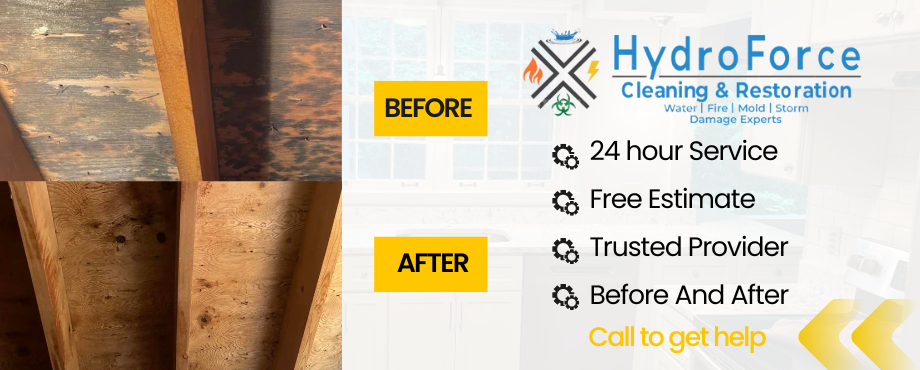
Addressing mold issues promptly and effectively is critical to maintaining a safe and healthy living environment. While natural remedies like vinegar can be effective for small mold infestations, understanding the limitations of DIY methods and the risks of using harsh chemicals like bleach is essential. Preventative measures, such as controlling humidity and addressing moisture issues, can help reduce the likelihood of mold growth in your home. For larger infestations or persistent mold problems, enlisting the help of professional mold remediation specialists ensures the issue is thoroughly resolved, protecting both your property and your health. Taking proactive steps today can save you from costly repairs and health complications in the future.
If you have a mold problem in your home that requires professional help, make sure to call HydroForce Cleaning & Restoration right away. We provide comprehensive mold removal services for homeowners and businesses in Chicago, IL, and the surrounding areas. Our team of highly trained technicians specializes in natural mold removal techniques to eliminate mold growth effectively. After carefully assessing your property, we’ll determine the best approach and keep you informed every step of the way. Our advanced cleaning methods not only remove mold but also prevent its return. The approach we take depends on factors such as the severity of the mold, the type of surface, and the size of the affected area. You can trust us to restore your space to a clean and healthy environment.
For professional mold remediation or water damage restoration in Chicago, IL, call HydroForce Cleaning & Restoration at (630) 835-0862.
Privacy Policy | Terms & Conditions | 630-835-0862
